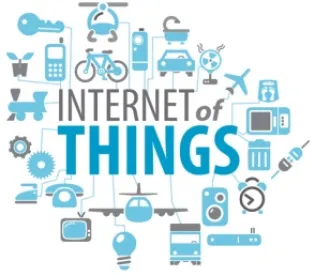City leaders across the globe are predicted to spend upwards of $41 trillion by 2020 to deploy smart city technologies within their locales. From Toronto to Tokyo, cities are vying to harness the benefits of the Internet of Things (“IOT”) in order to help make their streets safer, transportation more efficient, and their environments greener. While exciting, there are a number of challenges facing cities on their quest to get smart. Resources are scarce, building the required infrastructure is expensive and obtaining the necessary consensus and cooperation amongst municipal stakeholders can be downright impossible. For vendors looking to capitalize on this momentum, learning from successful smart city projects and planning around the common conflicts that tend to arise is crucial. Below are a number of best practices gleaned from the strategies and progress of a number of cities who have found success in implementing smart city solutions.
Target Cities Engaged in the Three C’s: Coalition building, Co-ordination, and Collaboration.
For most city departments, resources are scarce and so convincing municipal departments to divert attention away from day to day activities to help make IoT solutions effective for their citizens is an essential, but difficult task. How do you get the sanitation department of a large city to divert precious resources from daily garbage collection to participate in meetings with tech vendors about building and installing connected dumpsters? One tactic vendors should employ is seeking out cities who engage in coalition building early on (ideally prior to launching bids) and who have secured buy-in across those municipal departments essential to the success of the project. One report from Machina Research indicated that cities with the foresight to secure the buy-in necessary to ensure vendors have access to those decision makers and participants essential to facilitating service delivery were successful because it helped all stakeholders avoid roadblocks during implementation. In Mexico City, building coalitions across departments during the beginning stages of a smart project proved crucial in getting departments to allocate resources for strategic projects.
Additionally, cities that develop formal structures to support coordination across stakeholders also often experience successful smart city implementation. If you’re a vendor interested in working with a decentralized city, you may find that coordinating initiatives across many different departments may be especially difficult. In order to coordinate activities among different city departments, the city of Berlin created the Smart City Berlin Network. This central working group made up of over 100 companies and research institutes serves as a dialog partner for Berlin’s policy makers, including Berlin’s Senate Department for Urban Development and the Environment, the mayor’s office and the senate. In New York City, another decentralized city, the Mayor’s Office of Technology and Innovation has likewise facilitated coordination across the city’s various departments, suppliers, and academia to help establish best practices, which in turn has helped it avoid vendor lock in. By targeting cities with formal structures for cross departmental coordination, vendors may experience greater ease in implementation since they will have a centralized repository of know-how and assistance to draw from.
Vendors should also identify those cities engaged in collaboration with other cities. In the EU, the European Commission has created the European Innovation Partnership on Smart Cities and Communities (EIP-SCC), a formal initiative bringing cities together in order to improve urban life and find solutions to common challenges. With the idea that cities will achieve more when they collaborate, more than 80 cities have come together through Lighthouse Projects to share “technical learning, spread the risk of investing in new technology and [allow] technologies tested as part of the Lighthouse program [to] be implemented on a wider scale.” The EIP-SCC also caters to service providers via a marketplace that provides access to a pipeline of projects, partners, toolkits and even funding opportunities. By targeting cities engaged in similar collaboration efforts, service providers will benefit from economies of scale right along with the city it is working with and will gain exposure to other cities working on similar projects (and therefore in need of similar services).
Find (and Help Develop) Educated Stakeholders
Most vendors have horror stories of working on projects that were scoped incorrectly, involved the procurement of technologies or materials that turned out to be not fit for purpose, or involved never ending change requests. This inevitably results in increased costs–for both the vendor and client– frustration, and sometimes disputes. While these situations can occur in every type of vendor-client relationship, their occurrence during projects with tight budgets and numerous stakeholders can be especially painful. Experienced procurement departments with strong policies are adept at navigating these challenges, but the scarcity of resources within municipalities tend to result in procurement departments that are not fully up to speed on the unique issues facing smart city projects. Because smart city solutions are complex (e.g., they constantly evolve and are subject to frequent change, require coordination across multiple service providers, and their outcomes are difficult to measure), sophisticated purchasing processes are especially needed to support the selection of the right vendors to provide complex goods and services. Therefore, vendors working on particularly complex projects should seek to work with cities with sophisticated procurement departments or cities that are actively working to address the information gap. The city of Berlin, for example, established the Berlin Innovation Showroom; a platform designed to provide clearly structured information about innovative products, services and processes to state-owned companies in order to encourage the evaluation and adoption of smart city capabilities.
Cities working to educate the users of smart city technology should likewise be targeted, as users’ adoption of smart city solutions is a key measure of success for the city as well as its vendors. In Bogota, the city council is working to raise its citizens’ information and communication technology (ICT) skills, and has involved local districts, private sector companies and academic institutions. Guyana’s Ministry of Public Telecommunications’ Innovation Department is overseeing ICT training for persons of all ages across the country, collaborating with NGOs to provide computer literacy skills, workshops and certification. However, it’s important to remember that citizens aren’t the only user groups who should receive training. For example, acoustic gunshot monitoring technology was implemented in high crime areas in NYC. The equipment can pinpoint gunshots within seconds, but an operator must review the audio to confirm the recorded noise before alerting NYPD officers on their connected smartphones or tablets. The city quickly realized that, although the project is centered on the technology, training officers to correctly interpret the information they receive is equally important. Here, vendors can play an important role in training user groups to ensure they have the expertise necessary to effectively use smart city technology, thereby increasing the likelihood that such technology will be used and the benefits related to it will be realized.
Making citizens aware of the existence of smart city technology is equally important in encouraging their adoption of the technology, so vendors should target cities that engage in participatory planning and effective marketing. Some cities like Barcelona have allowed residents to participate in the planning of projects by having them vote on options for the redevelopment of certain roads and areas, thereby aligning the tech agenda with the city agenda and ensuring citizen buy-in. In Pune, India, over 350,00 citizens were engaged as part of the assessment process for making funding decisions on smart city projects. Since citizens are ultimately paying for the smart city, vendors should ensure that city authorities are making the benefits visible and accessible.
Conclusion
As a service provider, it is important to target cities who have thought through the myriad challenges of implementing smart city solutions and developed innovative solutions. Likewise, it’s important to keep in mind that most cities are searching for technology partners who can not only scale innovation, but who can help them ensure that the IoT infrastructure and benefits are accessible to users both within and outside of government. Although identifying those smart city projects with a high likelihood of success may be challenging, leveraging the lessons learned from smart city implementations around the world may help service providers quickly identify indicators of success.




 />i
/>i

